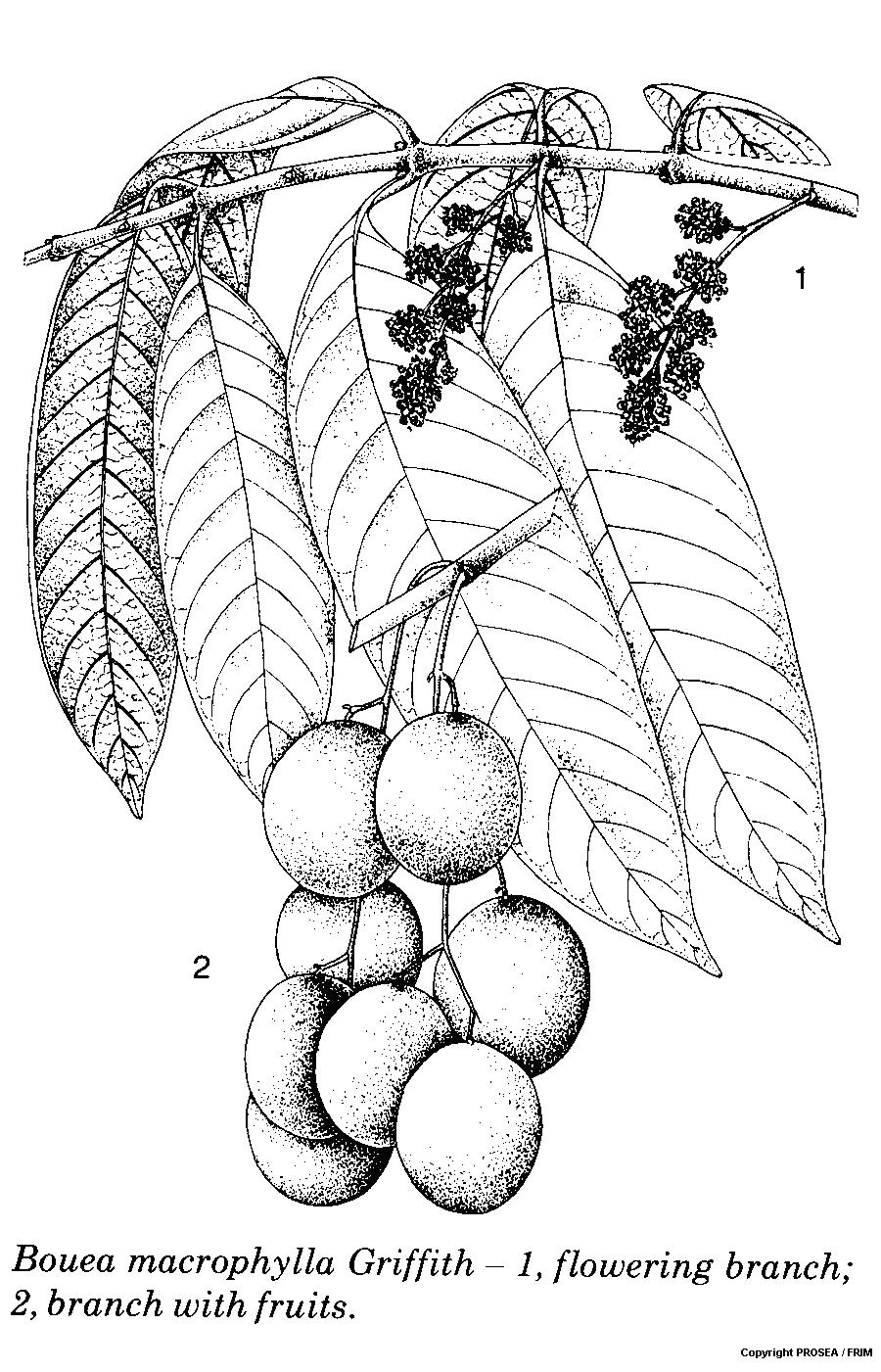Bouea macrophylla Griffith
Family
Anacardiaceae
Synonyms
Bouea gandaria Blume ex Miq.
Vernacular Names
| Malaysia | Kundang, rembunia, setar (Kedah). |
| English | Gandaria. |
| Indonesia | Ramania (Malay), gandaria (Java, Sunda). |
| Thailand | Ma praang (Pattani), somprang (Peninsula). |
Geographical Distributions
Bouea macrophylla is native to north Sumatra, Peninsular Malaysia and West Java. It is cultivated widely as a fruit tree in Sumatra, the wetter parts of Java, Borneo and Ambon, as well as Thailand (where it is locally important).
Description
B. macrophylla is a tree that can reach up to 27 m tall, light brown fissured bark and often with pendulous, smooth and angular or flattened branchlets.
The leaves are ovate-oblong to lance-shaped or elliptic, measuring (11-)14-30(-45) cm x (4-)5-8(-13) cm, decussate, simple, coriaceous, shining, entire, acute to wedge-shaped at the base and acute to acuminate at the apex. The petiole is 1-2.5 cm long.
The inflorescences are axillary panicles and measure 4-12 cm long. The flowers are mostly tetramerous and small. The sepal lobes are broadly ovate while the petals are oblong to obovate, measuring 1.5-2.5 mm x 1 mm, yellowish and turn brown later.
The yellow to orange fruit is a drupe, nearly spherical, measuring 2.5-5 cm in diametre, fleshy and juicy consistency, smooth and sour to sweet with a characteristic faint smell of turpentine.
Ecology / Cultivation
B. macrophylla is a tree of the humid tropics, thrives in a light and fertile soil. It occurs naturally in lowland forests below 300 m altitude, but has been successfully cultivated up to elevations of about 850 m.
Line Drawing / Photograph
References
- Plant Resources of South-East Asia No. 2: Edible fruits and nuts.



